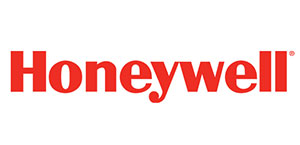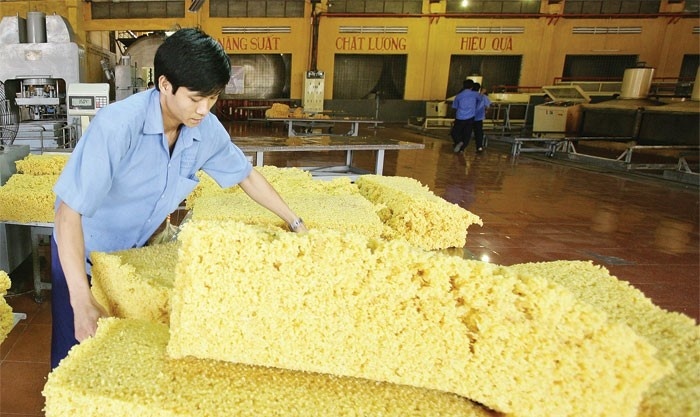US manufacturers plan more investment in data analytics
 |
A recent survey of manufacturing executives indicates that 67 per cent of respondents are pressing ahead with plans to invest in data analytics even as they pare back spending in other areas to combat tough business conditions.
Many say they view data analytics – a key component of the Industrial Internet of Things (IIoT) – as a viable solution to a cycle of problems that lead to downtime and lost revenue.
The survey titled “Data’s Big Impact on Manufacturing: A Study of Executive Opinions”, jointly conducted by Honeywell (NYSE: HON) Process Solutions (HPS) and KRC Research Inc. from May 23 to June 8, 2016, saw the participation of more than 200 North American manufacturing executives.
“Executives need to keep their businesses running smoothly and safely, and they’re banking on IIoT technologies to help navigate challenges, even during cash-strapped times,” said Andrew Hird, vice president and general manager of Honeywell Process Solutions Digital Transformation. “For more than 40 years, Honeywell has provided leading automation technologies that help manufacturers meet those goals. The IIoT by Honeywell is the next step in that evolution.”
Other key findings of the survey are that some companies are feeling pressure to continue working under the threats of unscheduled downtime and equipment breakdowns, which are viewed the most detrimental to maximising revenue. The majority of companies say they are already investing in data analytics technology. More than a quarter said they don’t plan to invest in data analytics in the next year; of that group, not understanding the benefits of data analytics and inadequate resources are among the most cited reasons for this lack of investment.
Unscheduled downtime was ranked as the top threat to maximising revenue, but 42 per cent of respondents admitted to running equipment harder than they should. When asked how often their companies experienced a list of issues in recent years, 71 per cent of respondents said they experienced equipment breakdowns at least occasionally, while 64 per cent said the same for unscheduled downtime.
“Running plant equipment harder than appropriate presents a host of issues ranging from equipment breakdowns to potential safety incidents,” said Hird. “Those issues inevitably lead to more downtime, which leads back to lost revenue. It’s easy to see how many companies feel they’re caught in a vicious cycle. Predictive analytics achieved through an effective IIoT by Honeywell solution can help companies break out of that cycle.”
Forty per cent ranked unscheduled downtime as the biggest threat to maximising revenue. Other threats included supply chain management issues (39 per cent), inadequate staffing (37 per cent), off-spec products (36 per cent) and equipment breakdowns (32 per cent).
Data analytics is a key component of a successful IIoT implementation for manufacturers. Most respondents had favourable views of the benefits of data analytics as a solution. For example, the executives said they agreed big data analytics can reduce the occurences of equipment breakdowns (70 per cent), unscheduled downtime (68 per cent), unscheduled maintenance (64 per cent) and supply chain management issues (60 per cent).
Respondents said they believe data can enable well-informed decisions in real time (63 per cent), limit waste (57 per cent), and predict the risk of downtime (56 per cent).
“It’s easy to put that puzzle together – these executives correctly believe data analytics can help them combat the biggest threat they see to business: unscheduled downtime,” Hird said. “This is why they feel it makes sense to continue investing.”
Additionally, more than two-thirds of respondents (68 per cent) said they are currently investing in data analytics, and 50 per cent said they believe their companies are right on track in their use of data analytics. Fifteen per cent said they believe their companies are ahead of the curve as it relates to data analytics usage.
Still, while the majority of respondents said they are already investing and/or planning to increase their investments in data analytics in the coming year, 32 per cent said they are not currently investing in data analytics. Meanwhile, 33 per cent said their companies are not planning to invest in data analytics in the next 12 months, or are unaware of any plans to do so.
Of those who currently have no plans to invest, 61 per cent believe their organisations already have systems in place to ensure safety, yield and success, 45 per cent said their companies have seen some growth without data analytics, 42 per cent said they don’t fully understand the benefits of big data and 35 per cent believe people are overstating the benefits of big data.
Sixty-three per cent of respondents who said they have no investment plans indicated they just don’t have the resources to appropriately do so, while 39 per cent said they don’t have the right staff to make the most of data analytics.
“For some companies, hurdles remain before the IIoT can be fully adopted,” explained Hird. “Some don’t believe they need it while others say they lack the resources to do it right. The good news is that IIoT is something that doesn’t require a wholesale change – it can be phased and scaled depending on an individual company’s circumstances. This is precisely why Honeywell says IIoT represents an evolution, not a revolution.”
Honeywell Process Solutions is a pioneer in automation control, instrumentation and services for the oil and gas; refining; pulp and paper; industrial power generation; chemicals and petrochemicals; biofuels; life sciences; and metals, minerals and mining industries.
Process Solutions is part of Honeywell’s Performance Materials and Technologies strategic business group, which also includes Honeywell UOP, international supplier and licensor of process technology, catalysts, adsorbents, equipment, and consulting services to the petroleum refining, petrochemical, and gas processing industries.
Honeywell is a Fortune 100 diversified technology and manufacturing leader, serving customers worldwide with aerospace products and services; control technologies for buildings, homes, and industry; turbochargers; and performance materials.
What the stars mean:
★ Poor ★ ★ Promising ★★★ Good ★★★★ Very good ★★★★★ Exceptional
Latest News
More News
- Green e-commerce in Vietnam still faces challenges (March 12, 2025 | 14:20)
- Corporate credit demand expected to keep rising this year (March 12, 2025 | 14:06)
- Vietnam and Singapore to enhance economic connectivity (March 12, 2025 | 11:43)
- VinFast ties up with BNI to accelerate green transportation in Indonesia (March 12, 2025 | 10:55)
- FPT offers AI to Indonesia’s largest oil company Pertamina (March 11, 2025 | 16:34)
- Robust online retail garners emphasis (March 11, 2025 | 12:00)
- Vietnamese corporations cooperating with Indonesian companies (March 11, 2025 | 11:44)
- HEINEKEN Vietnam proposes solutions for conducive business environment (March 11, 2025 | 10:30)
- E-commerce boom spurs overhaul in sustainability (March 11, 2025 | 10:18)
- Vietnam's crab exports up 86 per cent (March 10, 2025 | 17:32)


















 Mobile Version
Mobile Version